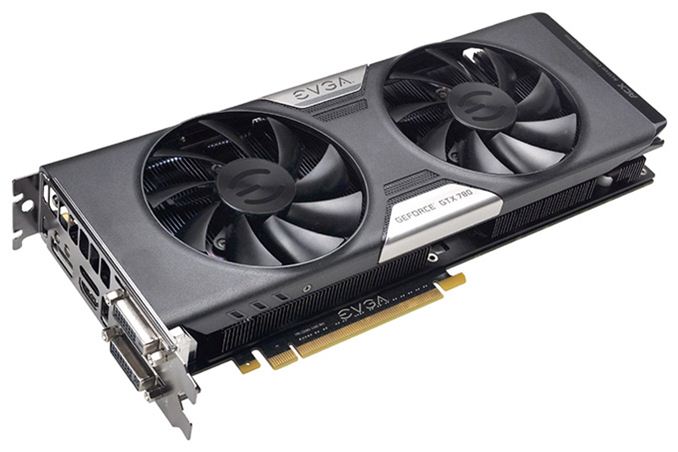 Looking at the launch of the GeForce GTX 780 in retrospect, one of the
more unusual aspects of the 780 was just how close NVIDIA let their
lower-tier GK110 card get to the upper-tier GTX Titan. GTX 780 was able
to deliver 90% of GTX Titan’s performance, but did so at just 65% of the
price of GTX Titan.
Looking at the launch of the GeForce GTX 780 in retrospect, one of the
more unusual aspects of the 780 was just how close NVIDIA let their
lower-tier GK110 card get to the upper-tier GTX Titan. GTX 780 was able
to deliver 90% of GTX Titan’s performance, but did so at just 65% of the
price of GTX Titan.Now a 10% performance gap is a fairly common gap for high-end NVIDIA cards. The price gap on the other hand is clearly wider than normal. For example, in the last generation the GTX 680 and GTX 670 were separated by roughly the same performance gap, but the GTX 670 came in at 80% the price of the GTX 680, not 65%. Ultimately NVIDIA’s “prosumer” positioning made Titan a very expensive card for gaming, with the end result being that the more strictly gaming focused GTX 780 could deliver very similar performance at a much lower price tag.
But the more interesting outcome of this performance/price disparity is how easy it is to close the performance gap against the much more expensive GTX Titan through overclocking. In the big picture 10% between tiers is almost nothing, and as we’ve already seen GTX 780 can more than make up that last 10% in overclocking. NVIDIA’s partners are of course well aware of this fact, and as the partners traditionally do, factory overclocked cards were a foregone conclusion. And with such a narrow gap between GTX 780 and GTX Titan, those factory overclocked cards should have little trouble matching GTX Titan.
Today we’re taking a quick look at one of those cards, EVGA’s GeForce GTX 780 Superclocked ACX. The 780SC ACX is a fairly traditional card for EVGA, filling in as the company’s standard first-tier factory overclocked card. With the GTX 780 Superclocked EVGA has rolled out two variations of this card, the first variation being an overclocked version of the reference card, and the latter being a semi-custom design with the company’s new ACX cooler.
| GTX Titan | EVGA GTX 780SC ACX | GTX 780 | GTX 770 | |
| Stream Processors | 2688 | 2304 | 2304 | 1536 |
| Texture Units | 224 | 192 | 192 | 128 |
| ROPs | 48 | 48 | 48 | 32 |
| Core Clock | 837MHz | 967MHz | 863MHz | 1046Mhz |
| Boost Clock | 876Mhz | 1020Mhz | 900Mhz | 1085MHz |
| Memory Clock | 6GHz GDDR5 | 6GHz GDDR5 | 6GHz GDDR5 | 7GHz GDDR5 |
| Memory Bus Width | 384-bit | 384-bit | 384-bit | 256-bit |
| VRAM | 6GB | 3GB | 3GB | 2GB |
| FP64 | 1/3 FP32 | 1/24 FP32 | 1/24 FP32 | 1/24 FP32 |
| TDP | 250W | 250W | 250W | 230W |
| Transistor Count | 7.1B | 7.1B | 7.1B | 3.5B |
| Manufacturing Process | TSMC 28nm | TSMC 28nm | TSMC 28nm | TSMC 28nm |
| MSRP | $999 | $659 | $649 | $399 |
EVGA’s design is a semi-custom design, pairing a standard reference board with their ACX cooler. Getting to the cooler momentarily, the board is otherwise unremarkable compared to other GTX 780s. The same voltage and power limitations apply here, so next to the factory overclock itself the biggest gains for the 780SC ACX come from the customary binning and reprogramming these cards go through. This means that the 780SC ACX runs at higher clockspeeds for any given voltage on the curve, improving performance without significantly increasing power consumption.
Moving on we have EVGA’s new ACX cooler, which is as much the star of the show for today’s review as the factory overclock itself is. EVGA isn’t a stranger to custom coolers, but their strongest hands have traditionally been their superbly supported reference cards, and their niche-in-a-niche products such as their Hydro Copper cards with pre-installed waterblocks or their extremely high-end Classified cards, neither of which is quite as mass market. EVGA has also offered alternative coolers at various points, but never as a principle product line.
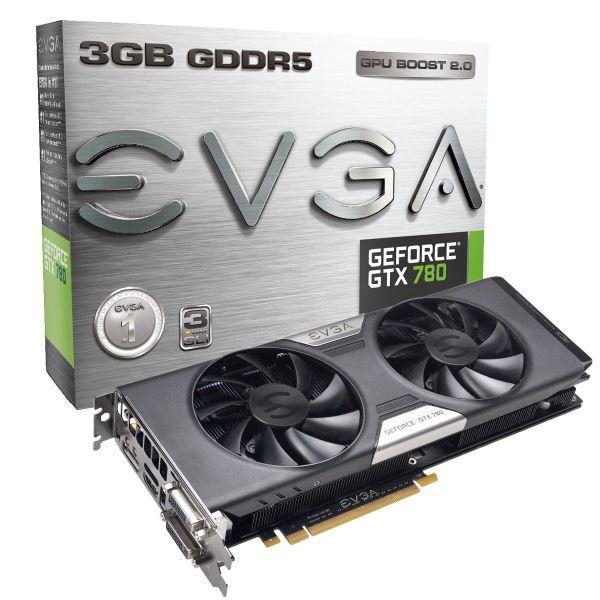

With that in mind, EVGA’s ACX cooler is a fairly typical entry for the custom cooler market, being based in principle in a twin fan open air cooler. This means we’re looking at a three part design: a baseplate for rigidity and heatsinking of smaller components, a heatsink that runs nearly the entire length of the card and is attached to the GPU via five aluminum heatpipes and an aluminum baseplate, and finally a pair of 90mm fans to provide airflow over the entire card. All in all it’s a common design principle for high end cards these days – thanks in large part due to the laws of physics – but it’s a common design that has proven to work well and makes some very straightforward and well understood tradeoffs in cooling performance versus noise. An open air cooler should deliver equal or better temperatures at lower noise levels, at the cost of shoving more of the cooling workload onto the chassis itself.
What should be more significant is EVGA’s use of ball bearings in the fan motors. Ball bearing fans are no more a breakthrough than twin fan coolers, however bearings are a seldom promoted item and as a result we rarely know what type of bearings are in use or when manufacturers switch between the bearing types. So consistently using ball bearings on all of their ACX coolers is if nothing else a promotional point for EVGA, as they’re a more expensive/premium option than sleeve bearings. Mechanically speaking, compared to sleeve bearings, ball bearings typically have greater longevity and a bit less noise under heavy load, in exchange for a bit more noise at idle, making them a good tradeoff for a high-end card. From a practical point of view the longer lifespan of ball bearings will be the greatest gain out of this, while any noise tradeoffs are secondary as the fan itself will usually be the greater factor. Of course EVGA’s specific numbers aren’t something we can validate, but the general benefits are fairly straightforward.
Moving on, as a semi-custom card the 780SC ACX is otherwise identical to the reference GTX 780. This means it has the standard NVIDIA display I/O configuration of 2x DL-DVI, 1x HDMI, 1x DisplayPort 1.2, and the same 10.5” length. Even the official TDP is the same at 250W, though as we’ll see in our testing there is a slight increase in power consumption at the wall.
Rounding out the package is EVGA’s usual collection of software and hardware accessories, including a pair of PCIe power adapters and a DVI to VGA adapter. As far as EVGA’s software goes there’s little to be said that we haven’t said before: EVGA still shares the gold standard for software, with their fantastic Precision X overclocking utility and their OC Scanner X artifact scanning utility.
Meanwhile, as with all of EVGA’s North American cards, the 780SC ACX comes with EVGA’s standard 3 year transferable warranty, with individual 2 or 7 year extensions available for purchase upon registration, which will also unlock access to EVGA’s step-up upgrade program. Finally, the MSRP on the card is $659, only $10 above the MSRP for the standard GTX 780. Though GTX 780 base pricing is by no means cheap, as we’ll see in our benchmarks $10 (2%) more for a 12% overclock and Titan-like performance renders the stock GTX 780 redundant almost immediately.
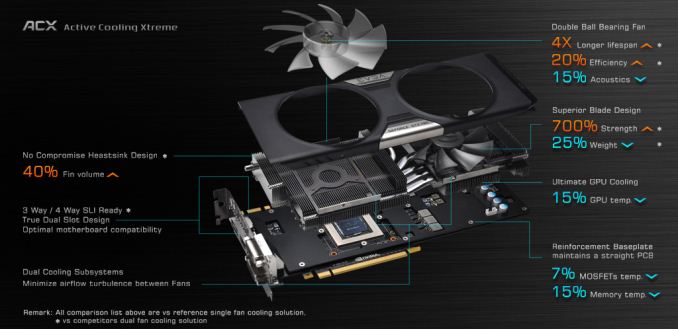
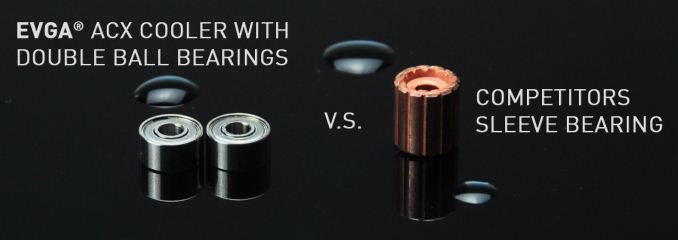
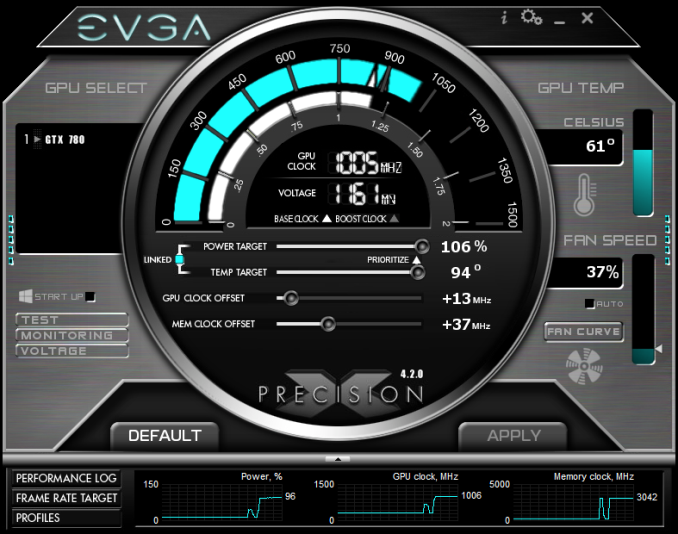
No comments:
Post a Comment